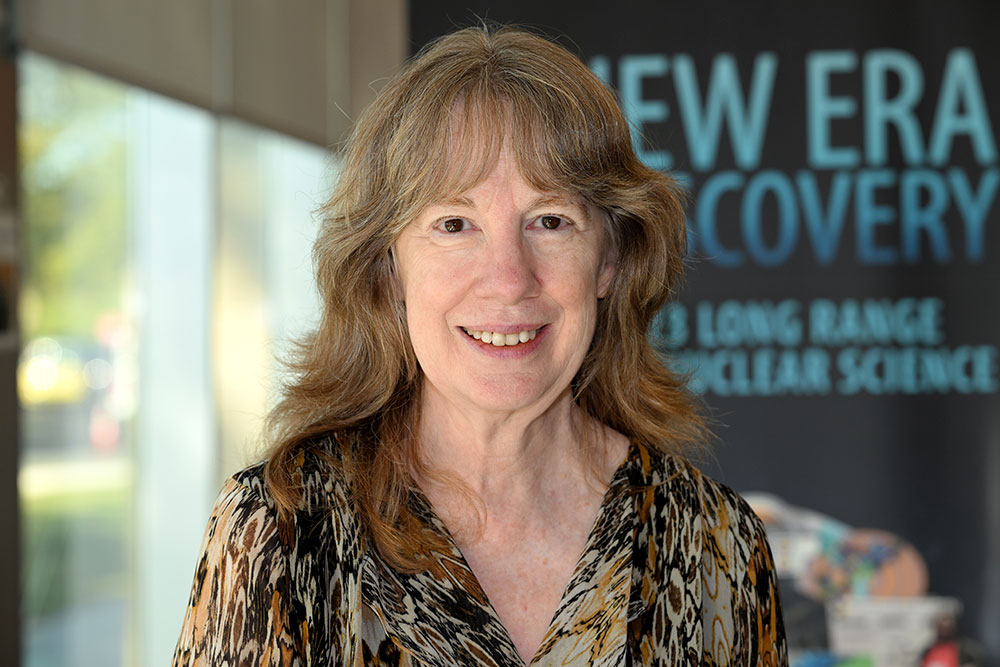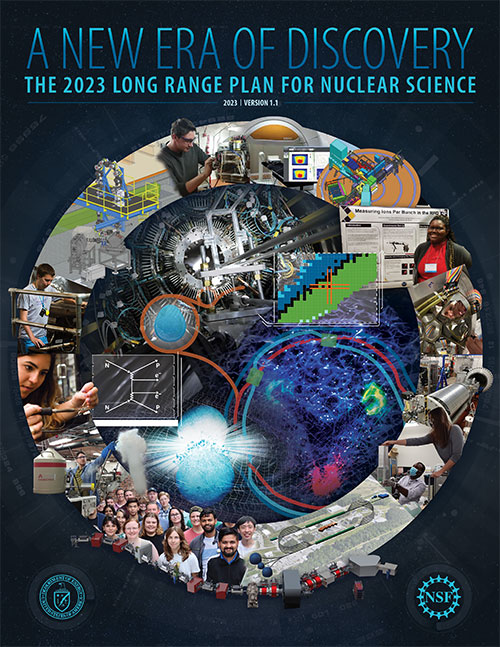Brookhaven Lab Statement on Nuclear Science Advisory Committee 2023 Recommendations for Nuclear Physics Research
October 6, 2023
On Oct. 4, 2023, the U.S. Department of Energy (DOE) and National Science Foundation's (NSF) Nuclear Science Advisory Committee (NSAC) presented its “Long Range Plan” of recommendations to advance U.S. nuclear physics research over the next decade. The Committee’s recommendations include capitalizing on the extraordinary opportunities for scientific discovery made possible by substantial and sustained investments in current nuclear science facilities and the ecosystem in which they operate, investments in new facilities and experiments, and strong support of the research community.
Brookhaven Lab is home to the Relativistic Heavy Ion Collider (RHIC), one of four major DOE Office of Science user facilities for nuclear physics research. Brookhaven has also been chosen to host the next major nuclear physics user facility, a one-of-a-kind, $1.7 to $2.8 billion Electron-Ion Collider (EIC), expected to come online in the early 2030s.
We are excited to see that completing the science program at RHIC is included in the Plan’s highest recommendation, along with supporting the nuclear science workforce essential to the research at nuclear science facilities and universities across the U.S., and that the “expeditious completion” of the EIC is the Plan’s “highest priority for facility construction.”
Over the past two-plus decades, RHIC’s explorations of the inner building blocks of matter have advanced our understanding of the quarks and gluons that make up protons and neutrons—and ultimately atomic nuclei. Collisions of heavy nuclei at RHIC have definitively recreated the conditions of the early universe and revealed that the primordial soup of quarks and gluons, known as a quark-gluon plasma, flows like a nearly perfect liquid. Collisions of polarized protons at RHIC have given us deeper insight into the nature of proton spin, a property used in MRI scans but still mysterious in its origins.
As we complete the RHIC science mission, we are also well into the design stage for the EIC. We are proud to be moving toward the construction of this facility with our partners from DOE’s Thomas Jefferson National Accelerator Facility (Jefferson Lab) and working with members of the Electron-Proton/Ion Collider (ePIC) detector collaboration as well as the worldwide community of nuclear experimentalists, theorists, and accelerator scientists to realize its scientific promise.
As noted in the Plan, the EIC will make use of key infrastructure from RHIC and add a sophisticated electron accelerator ring. Physicists will use these electrons as a precision tool to probe the inner structure of protons and nuclei directly to learn how the fundamental building blocks operate within the matter that makes up our world today. These experiments will elucidate the origin of visible matter in the universe and offer unprecedented insight into the properties and behavior of gluons—carriers of the strongest force in nature. EIC experiments will also answer the remaining questions about the origin of proton spin. And as the first collider of its kind to be constructed in the world, the EIC will significantly advance accelerator technology with potential benefits for many other fields.
We were pleased to see the Plan highlight how the EIC’s “compelling, unique scientific opportunities and cutting-edge technologies are attracting physicists worldwide,” and that “international engagement and contribution are important to the collider’s realization and the success of the EIC science.” We believe that, like RHIC, the EIC will help to maintain U.S. leadership at the frontiers of nuclear physics and accelerator science technology for decades to come.
There are many compelling avenues to explore in nuclear science, and we fully support all the recommendations in the NSAC Long Range Plan. Together, these recommendations will make the field stronger and build on a decades-long track record of reliable stewardship of public funds and demonstrated success in achieving its long-term goals. We look forward to DOE and NSF endorsing this Long Range Plan and to working with these agencies and the nuclear physics community to implement its comprehensive recommendations.
— JoAnne Hewett
Director, Brookhaven National Laboratory
Brookhaven National Laboratory is supported by the Office of Science of the U.S. Department of Energy. The Office of Science is the single largest supporter of basic research in the physical sciences in the United States and is working to address some of the most pressing challenges of our time. For more information, visit science.energy.gov.
Follow @BrookhavenLab on social media. Find us on Instagram, LinkedIn, Twitter, and Facebook.
2023-21490 | INT/EXT | Newsroom











